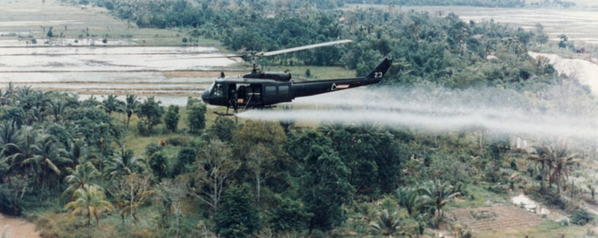Agent Orange linked to skin cancer risk

Vietnam War veterans with prior exposure to the herbicide Agent Orange may be at higher risk for certain types of skin cancer, suggests a report in the February issue of Plastic and Reconstructive Surgery®, the official medical journal of the American Society of Plastic Surgeons (ASPS).
The study adds to previous evidence that risk of non-melanotic invasive skin cancer (NMISC) is increased even four decades after Agent Orange exposure, with at least some exposed veterans having unusually aggressive non-melanoma skin cancers. The lead author was ASPS Member Surgeon Dr. Mark W. Clemens of The University of Texas MD Anderson Cancer Center and colleagues.
Skin cancers present in about half of vets exposed to Agent Orange
During the Vietnam War, Agent Orange was widely used as herbicide and jungle defoliant. It has been linked to a wide range of cancers and other diseases, caused by the highly toxic dioxin contaminant TCDD. "TCDD is among the most carcinogenic compounds ever to undergo widespread use in the environment," according to Dr. Clemens and coauthors. Veterans Affairs recognizes and provides benefits for certain cancers and health problems associated with prior dioxin exposure during military service, however skin cancer is currently not one of them.
The researchers analyzed medical records of 100 consecutive men who enrolled in the Agent Orange registry at the Veterans Affairs Hospital of Washington, DC, between August 2009 and January 2010. Exposure to TCDD consisted of living or working in contaminated areas for 56 percent of veterans, actively spraying Agent Orange in 30 percent, and traveling in contaminated areas for 14 percent. The study was limited to men with lighter skin types.
The rate of NMISC in TCDD-exposed veterans was 51 percent—about twice as high as the rate expected in men of similar age group. The risk of skin cancer increased to 73 percent for veterans who actively sprayed Agent Orange. Exposed men with the lightest skin types and those with lighter eyes were also at higher risk.
Forty-three percent of the veterans had chloracne, a skin condition specifically caused by exposure to dioxins. For this group, the rate of NMISC was more than 80 percent.
Call for more research on risks and treatment
The rate of malignant melanoma, the most serious type of skin cancer, was similar to that expected in men of similar age. However, the article includes two case reports of unusually aggressive NMISC—with numerous recurrences requiring multiple surgeries—occurring in TCDD-exposed veterans.
Exposure to Agent Orange and TCDD has been linked to a wide range of health problems, including many different cancers. However, its association with the basal cell carcinoma and squamous cell carcinoma—the two most common types of skin cancer—has been unclear.
Cases of "aggressive and diffuse" non-melanoma skin cancers in TCDD-exposed veterans were first reported in plastic surgery journals in the mid-1980s. Dr. Clemens and colleagues initiated their study after observing similar patients in their clinic over the last few years. The researchers emphasize that their study has some important limitations—including the lack of detailed information on TCDD exposure and the absence of a comparison group of Vietnam-era veterans not exposed to Agent Orange.
Nevertheless, the results strengthen the previously reported association between TCDD exposure and the development of NMISC, even many years after exposure. Certain groups appear to be at particularly high risk, including veterans actively involved in spraying Agent Orange, those with chloracne, and those with lighter skin types. Dr. Clemens and coauthors write, "Further studies are warranted to determine the relative risk within this patient population and to determine appropriate management strategies so that veterans may receive the care they earned in service."
Source: Wolters Kluwer Health
Featured image: U.S. Huey helicopter spraying Agent Orange over Vietnam. Originally from U.S. Army Operations in Vietnam R.W. Trewyn, Ph.D. , (11) Huey Defoliation National Archives: 111-CC-59948, originally found in Box 1 Folder 9 of Admiral Elmo R. Zumwalt, Jr. Collection: Agent Orange Subject Files

I flew behind the Ranch Hands on 2 missions in 1970 to provide Gun cover for any hostile fire. We ate that Stuff flying our Cobras directly behind them. It tasted kind of like metal. I have had about 15 squamous cell and basal cell carcinoma’s cut off from face, scalp, back, arms, and ears starting in 1984 till now. I have light skin and blue eyes. I applied to VA for compensation and was denied.
i have been fighting the va for x years for recognition of my exposure to ao. i have had x amount of skin cancers ,my libedo has since my and b4 my seperation from service deminished!i need recognition,have tried to get help from the va, no go
Interesting article! I was in Vietnam in 1969-70, in an area where Agent Orange was used. To date, I have had MOES and reconstructive surgery 6 times on my face and once on my fore arm. I have reported this to the VA and was told there was no connection.